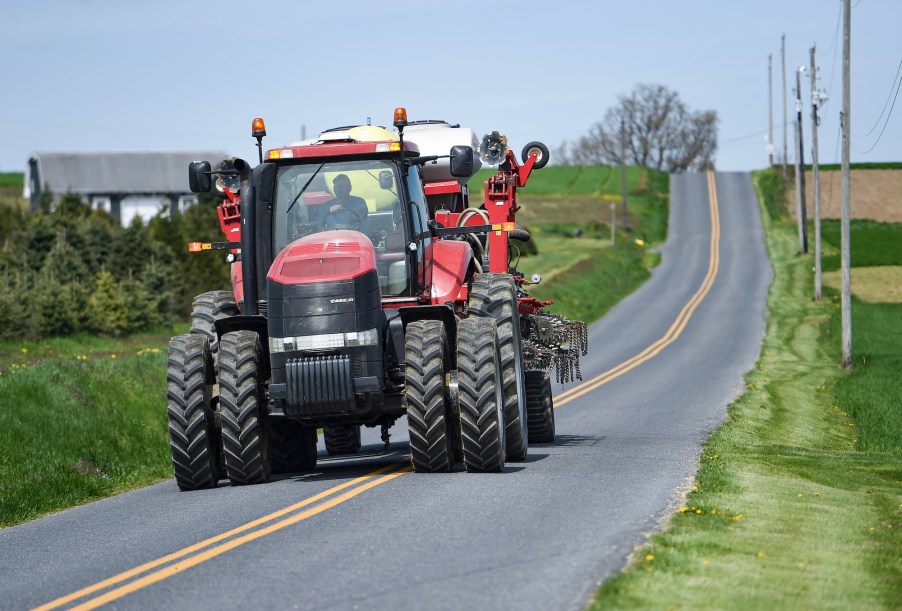
Is It Illegal to Drive a Tractor on the Road?
If you live in a rural area, you have probably seen tractors and other farm maintenance vehicles on the road. You may have even been stuck behind one. In fact, evidence shows slow drivers cause more accidents than fast ones, and tractors are decidedly not fast.
But unlike cars that drive frustratingly slow in the left lane, tractors won’t get ticketed for not driving fast enough. That is as long as they aren’t on a freeway.
Are tractors allowed on roads?
It might be frustrating to get stuck behind tractors, and you might wonder if it is even legal for them to be on the road. But the answer is, yes, it is perfectly legal to drive tractors on roads. According to AGDAILY, laws vary from state to state, but it is still legal to drive a tractor on a road.
What rules do you have to follow if you drive a tractor on the road?
Though rules and regulations differ among states, some are common. Almost every state requires a slow-moving vehicle sign — an orange triangle that becomes a hollow red triangle at night to alert other motorists. Even in states where this sign is not required, such as North Carolina, it is still highly recommended. Additionally, several states do not allow farm equipment on public roads at night. That’s because no matter how many flashing lights you have, judging the speed of an oncoming vehicle at night is difficult.
For motorists, it is important to know that if you are in a no-passing zone, regardless of how slow another vehicle or tractor is going, it is illegal to pass them. It is also dangerous. Additionally, if you see a tractor turning, you should never try to go around it because it can be hard to determine which way it is going. And if it’s towing a trailer, it could swing out wide in the opposite direction.
Remember these safety tips
In addition to following the rules, you should also practice safe driving. Tractors are slower, larger, and can carry or tow additional equipment, so only skilled operators should drive tractors on public roads, the National AG Safety Database (NASD) reports. Before driving, you should make sure your tires are properly inflated, the wheels are bolted tightly, and the vehicle is balanced properly.
Drive on the shoulder if it is wide enough. Listen for approaching cars, and constantly be aware of your surroundings. This includes pedestrians, animals, road obstacles, and potholes. Slow down around sharp curves and when going downhill. You should also not have extra people or pets riding on the tractor with you. They could fall off and sustain serious injuries, and you could accidentally run them over.
Rural areas usually have fewer road hazards than cities. You might see slow-moving farm equipment such as tractors. Or a deer might run into the road and freeze in front of you, which is actually a thing, not just an urban myth. Tractors — along with deer — have a right to be on the road, regardless of speed. So try to be patient and honk only at animals, not tractors.


